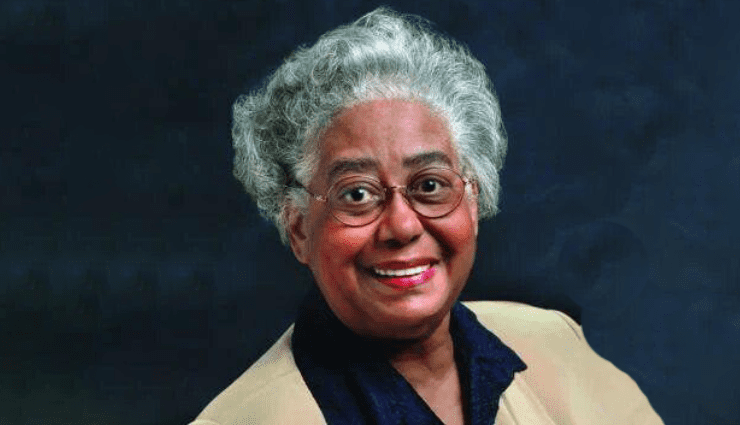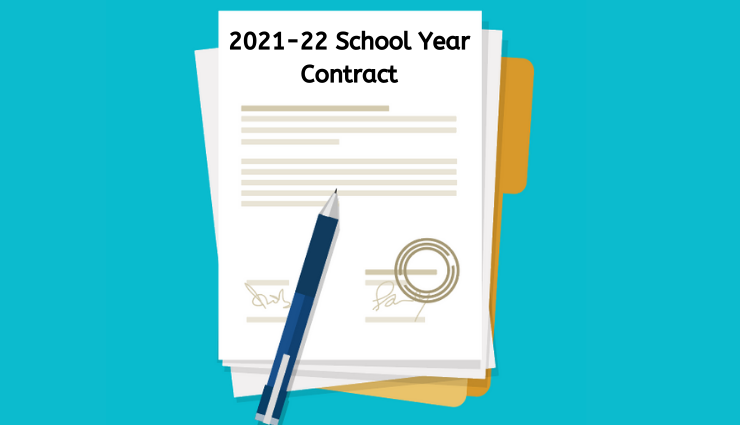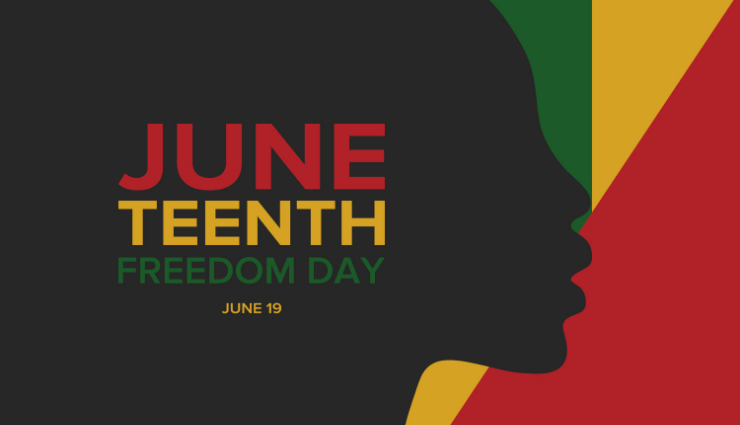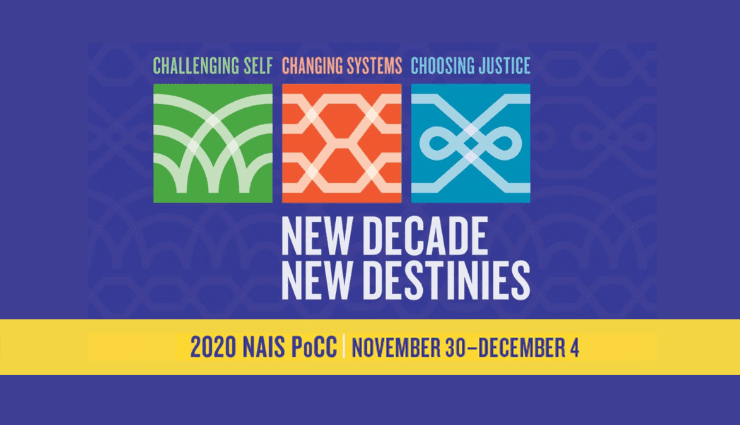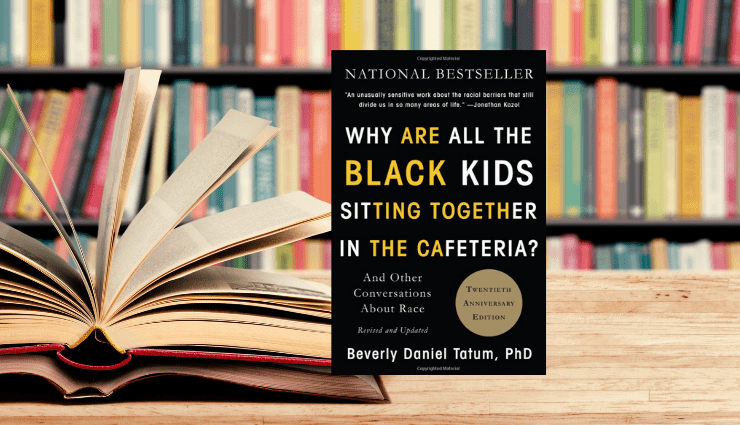Antiracist Teaching and the Future of Education

At Carney Sandoe, as elsewhere, we’ve been talking a great deal lately about innovation in education — and with good reason. So much change has taken place under the pressures of the COVID-19 pandemic and other ground-shifting cultural and political challenges — and schools have been caught tight in the squeeze. As school consultant Ian Symmonds noted in a recent webinar, “2020 will be remembered… as the year that reset education.”
Much of the innovation we’ve seen during this reset year has been more or less forced upon schools. Still, some of the resulting new and emerging practices in independent schools have been impressive — and offer great promise for the direction all schools can head now.
Overall, we’re seeing a new kind of school mindset — one that prioritizes flexibility, innovation, empathy, and open-mindedness in pursuit of school missions. From the curricular perspective, we’re seeing the rise of student-directed learning, a shift in thinking about assessment, and a greater emphasis on thematic-based, cross-curricular courses with the aim of mastery learning. Schools are beginning to embrace a programmatic flexibility that allows for greater student agency and engagement with the goal of deeper, fuller learning. We’re also seeing a much needed rethinking on matters of diversity, equity, and justice, especially regarding antiracist and antibias teaching and the development of truly inclusive school communities.
In independent schools, the summer months traditionally offer educators some breathing room, time to downshift from the intensity of the school year. We certainly hope that all educators can make such time for personal wellness this summer. We all need it. But we also think it makes sense for schools to use part of this summer to clarify the kind of schools they want to be in the post-pandemic world — and start building around the innovations that have taken place this year and reshaping other core aspects of their programs to strengthen their missions. As organizational guru Jim Collins notes, great organizations make sure that once they get the flywheel of change spinning, they focus on keeping it going.
Overall, we applaud the shift we’re seeing in schools to more socially and emotionally attentive programming and imagine that schools will continue to evolve in this direction. But we’d also love to see all schools prioritize and strengthen their commitment to racial justice — particularly to antiracist and antibias teaching — so that all students receive the kind of education underscored in every school’s mission.
Cause, Effect, and Response
There have been a number of recent catalysts for change in thinking about antiracist teaching, of course. But one that seemed to strike home with many schools has been the “Black at…” postings on Instagram last summer following the death of George Floyd and the rise of the Black Lives Matter movement. The postings by Black graduates of numerous independent schools have made it clear that many schools have not served their Black students well. The students’ experiences with racism, marginalization, and microaggressions — often at the hands of teachers — were painful to read. They also make it clear that, while many independent schools have expressed a commitment to diversity, equity, and inclusion for years or even decades now, the majority of schools have not achieved these DEI goals.
To their credit, many independent schools have taken quick ownership of their shortcomings and have begun the work to address them fully. Indeed, a number of schools have been engaged in a deep inquiry into the differences in student outcomes based on race and have emerged with a fuller commitment to antiracist practices in the classroom and the school community.
As one school head recently noted, the Instagram postings made it clear that her school was not keeping the promise of the mission statement for all of students. Immediate action was the only institutional and moral option. Taking a similar stance, another school head noted in a letter of response to his school community, “We seek to amplify the diverse voices of our culture and raise awareness of the more damaging effects of bias in our interactions.”
This latter school, in fact, has made a deep and impressive commitment to community and curricular reforms. The result is a far-reaching effort to correct past wrongs and create a truly inclusive community and antiracist curriculum that not only serves all students equitably and well — but also does its part to address racism in the broader culture. The goal for the school is to move beyond aspirations and rhetoric to demonstrable outcomes — with a transparent process that involves all adults in the school community.
On the academic front, this school plans to create an Antiracism and Social Justice Course, required for all high school students, focused on four main goals: deeper understanding of the historical roots of racism; deeper understanding of the current racial landscape; development of an antiracist mindset; and application of practical antiracist skills. At the same time, every social studies class will begin the year with a focus on informed discussions on issues related to Black Lives Matter, and every American history course will strengthen the presence of the African-American experience. The school is also undertaking a full curriculum audit to assess the current presence of diversity in the program and determine any necessary adjustments.
When it comes to antiracist teaching, the entire faculty will engage in training starting this coming September — and the work will continue every year.
Meanwhile, the school is also examining the intersection of race and governance and policy; hiring, onboarding, and retention; and matters of accountability and discipline. This 360-degree DEI process includes the board of trustees and head of school taking lead responsibility for the implementation of all related policies, practices and programs — with the financial commitment to support them.
We’re aware of other schools engaging in similar efforts to move from DEI aspirations to policies and practices that will result in measurable outcomes. And we encourage all schools to start their own process this summer, if they haven’t begun already. As Brandon Jacobs, Practice Leader for Carney, Sandoe & Associates’ Diversity, Equity, Inclusion & Belonging Consulting Practice, notes, this is the kind of lean-in that every school needs to make now — for all students, the school and the common good. Creating a comprehensive diversity and inclusion plan, he says, offers “a guiding light for everyone in the community.”
Diverse Teachers and Antibias Teaching
There are numerous ways, of course, that schools can engage in the work of transforming their programs into high-quality academic and community life programs that are diverse, inclusive, equitable, and just. But at the heart of this work are the teachers — and it makes sense for schools to focus on both diversifying the teaching staff and helping all teachers build antiracist skills, while also evolving their curriculum.
In “Teacher Diversity and Student Success: Why Racial Representation Matters in the Classroom” (Harvard Education Press, 2021), authors Seth Gerhenson, Michael Hansen, and Constance A. Lindsay make the overarching point that at the heart of all DEI work in schools are the teachers. “A representative teaching force,” they write, “is an effective teaching force…. For too long, teacher diversity has been a secondary (at best) focus of teacher policy.”
Overall, the authors focus on three main goals: bring more people of color into the teaching profession; ensure that more students are exposed to teachers of color; and train all teachers, but particularly white teachers, to effectively teach a diverse student body.
One might argue that independent schools are not responsible for the first matter — getting more people of color into the teaching profession — beyond their own campuses. But, in fact, there are independent schools that have engaged in this work for years, including, for example, Phillips Academy (MA), which has run its very successful Institute for the Recruitment of Teachers (IRT) for decades now. Other schools are finding ways to support the broad development of a diverse teaching force within their schools and beyond. In the current spirit of creative problem-solving and institutional flexibility, we can easily imagine the independent school community finding ways to help encourage, train, and support young teachers of color. Indeed, this work is also central our practice at Carney Sandoe.
When it comes to antibias teaching and community-life matters, the authors of “Teacher Diversity and Student Success” encourage schools to approach the goals systemically. It starts, they say, with institutional culture. “Organizational leadership needs to demonstrate a visible commitment to diversity and inclusion,” they write. For independent schools, this means that the board, the head, and the rest of the leadership team must make diversity and inclusion a core priority. It also means that they need to offer greater transparency about efforts and acknowledge and address any gaps between aspirations and reality, between goals and practices.
The authors also argue for the ongoing education for all faculty and staff on why diversity and inclusion are organizational priorities. At the same time, school leaders need to listen fully — seek feedback from teachers, students, alumni, parents and other stakeholders regarding their experiences related to diversity and inclusion.
All in all, the work must be seen as a matter of continuous improvement, with systems set up to measure and recalibrate practices and policies.
Creating Healing and Leading Transformation
It should help schools to know that the push for racial justice in American society is taking place in all fields. One such effort that stands out for us is the impressive work at the W.K. Kellogg Foundation on Truth, Racial Healing, and Transformation (TRHT). Launched in 2016, TRHT is a comprehensive, national and community-based process “to plan for and bring about transformational and sustainable change, and to address the historic and contemporary effects of racism.” The result is new framework for change created by 176 national experts that is now being embraced by numerous states and communities nationwide. The Association of American Colleges and Universities is also working with 30 colleges and universities to set up and use the TRHT format for racial equity and justice. To date, centers have already be set up at Brown University, Spelman College, Duke University, the University of Hawai‘i at Mānoa, Milsap College, and elsewhere. We encourage independent schools to consider ways they, too, can adapt the TRHT framework to help their communities heal from any racial harm and establish a process of actionable change.
As the Kellogg Foundations notes, TRHT is designed to help communities across the U.S. “embrace racial healing and uproot the conscious and unconscious belief in a hierarchy of human value that limits equal access to quality education, fulfilling employment, safe neighborhoods, equal housing opportunities and quality health care.”
Schools, of course, are only part of the racial-justice puzzle. But we believe the society can’t achieve the overall goals without schools being deeply involved.
Looking Ahead
This pandemic has taken its toll on us all. But it also has us looking ahead with great hope for humanity’s and the planet’s future. The United States, as well all know, was founded on remarkable, democratic principles — and democracy remains one of humanity’s most important developments. But the founders of this nation unfortunately believed in a racial hierarchy that has long tainted our efforts to be a true democracy and has damaged all communities to this day.
In James Baldwin’s “Talk to Teachers,” he noted the painful irony in American education for Black children. On the one hand, we encourage them to be open to “the grandness of the world.” On the other hand, through our programs and actions we ask them to accept a position full of constraints. How, Baldwin asks “do such children say yes to a world that denies their dignity?” Eddie S. Glaude, a professor of African American Studies at Princeton, writes about this irony in his book “Begin Again.” Among other things, he says that schools will improve the quality of their education when they understand and address what he calls “the value gap” — the current belief, often internalized and unconscious, that white people ought to be valued more than others.
The summer of 2021 seems like the right time to begin the process of racial healing and transformation in all schools — a time to dismantle the value-gap in the field of education. Schools that start the process now are not only taking a moral stance that aligns with their missions, but with clearer plans and practices and goals for racial inclusion and equity, they are also the schools that will emerge from the pandemic as stronger institutions, better able to fulfill their missions and position themselves as truly dedicated 21st-century schools.

